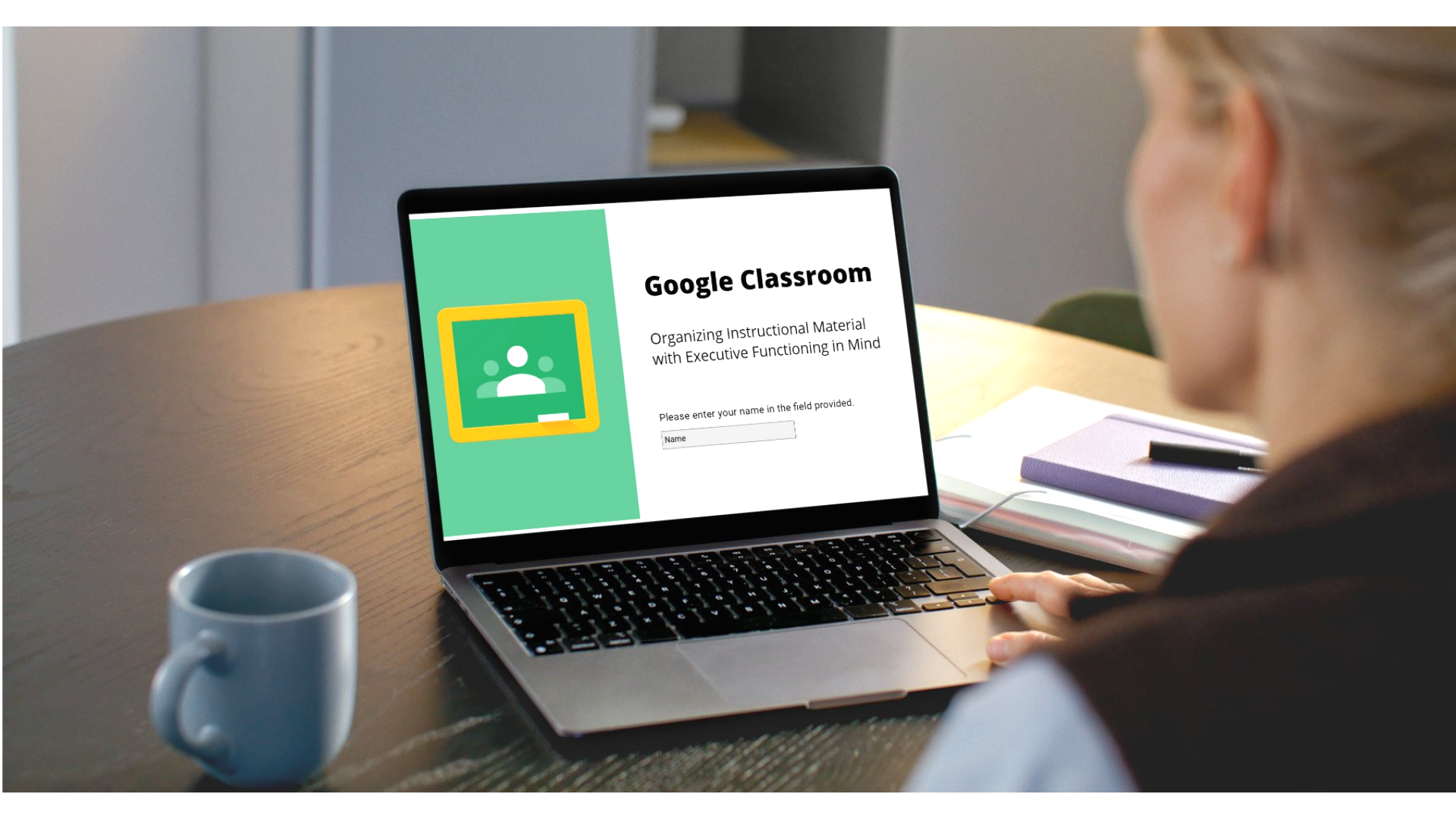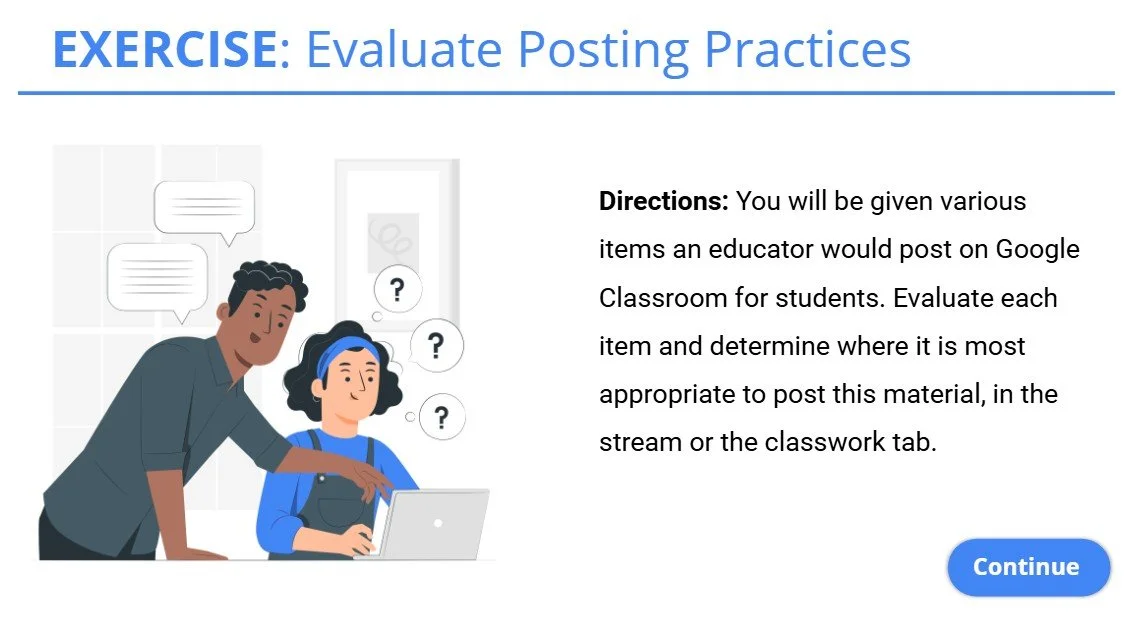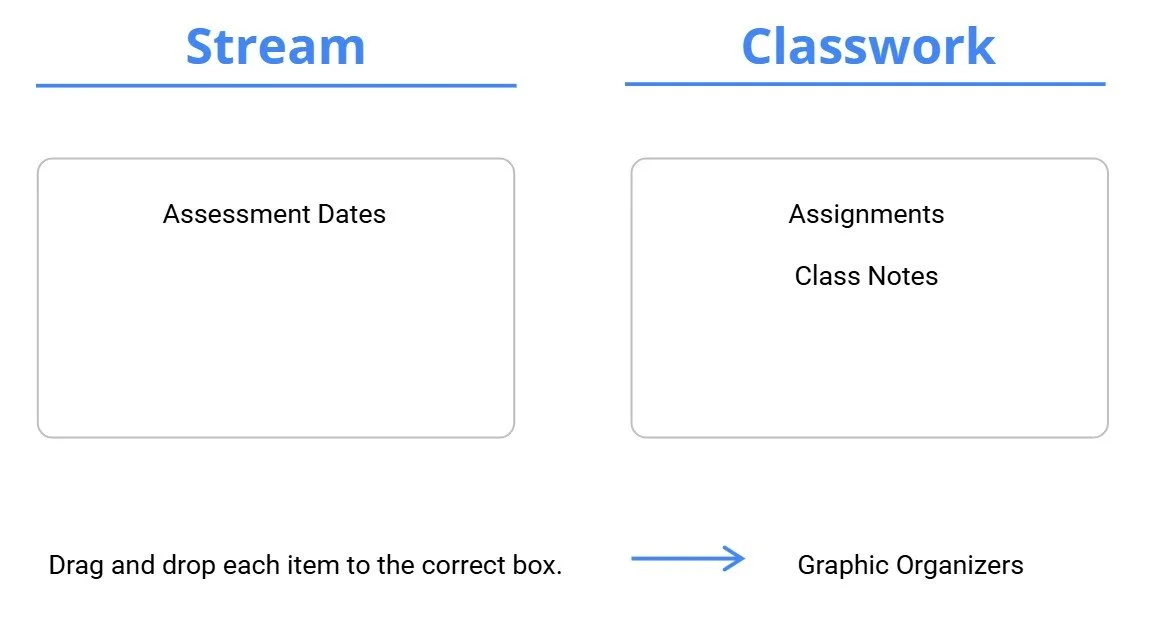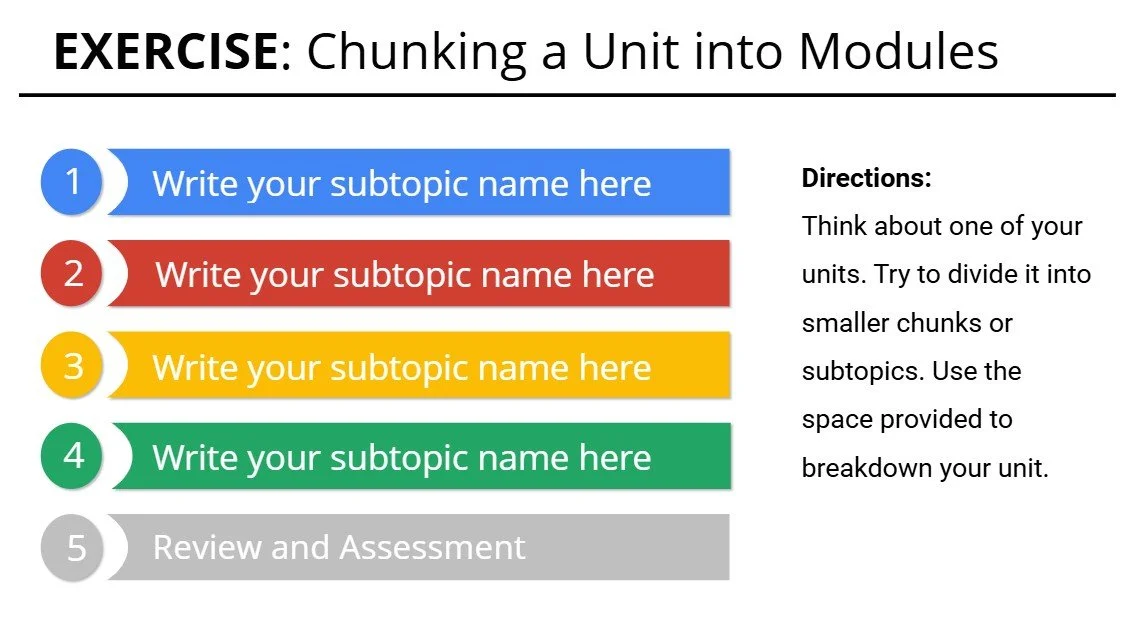Google Classroom Training
This project was a micro-lesson for educators using Google Classroom on how to organize their digital materials to best support the needs of students struggling with executive functioning.
Audience:
Educators who use Google Classroom as their Learning Management System
Responsibilities:
Development
Design
Tools Used:
Adobe Illustrator
Articulate Storyline 360
The Problem
Many students who struggle with executive functioning find it difficult to keep track of learning materials, upcoming assignments, and digital resources. Even when content is accessible online, a cluttered or inconsistently organized classroom platform can create unnecessary barriers to learning.
In many K–12 settings, teachers use Google Classroom to distribute and organize instructional materials. While their intent is to make accessing the curriculum more accessible to their students, educators can unintentionally create more barriers for students with executive functioning challenges if resources are inconsistently named, scattered across topics, or lack visual cues. Instead of focusing on learning, students are expending additional cognitive effort hunting for files and assignments. This friction undermines access and equity.
The goal of this project is to identify and share best practices in Google Classroom organization, thereby reducing barriers for students with executive functioning difficulties, regardless of their tech fluency.
The Solution
This microlesson is designed to help educators structure their Google Classroom in a way that minimizes executive functioning barriers for students. By modeling clear organization strategies—such as consistent naming conventions, logical topic groupings, and streamlined access to key materials—educators can reduce cognitive load and make it easier for all students to navigate their learning environment.
Because it’s a short, focused lesson, educators can immediately apply the strategies to their existing classrooms, regardless of their level of familiarity with the platform or other instructional technologies.
My Process
To design this microlesson, I began by speaking with a group of teachers across grade levels to understand common challenges students face when navigating online learning platforms. I also reviewed examples of existing classroom setups and identified patterns in what made some classrooms easier to navigate than others.
From these discussions, several best practices emerged such as organizing content by week or unit, keeping the Classwork tab ad Stream structured and consistent, and using clear naming conventions for assignments and materials. These insights informed the development of a short, interactive microlesson that models these strategies in action.
Full Development
During development, I intentionally grounded my design decisions in adult learning theories—particularly practical application, microlearning, and interactive engagement. Because adult learners benefit most when content is relevant, concise, and immediately applicable, I structured this eLearning experience as a microlesson that could be completed in under 10 minutes and revisited as needed.
Drawing from Knowles’ principles of andragogy, I focused on connecting new concepts to educators’ existing experiences with Google Classroom. Rather than simply telling teachers what to do, the lesson invites them to explore, apply, and reflect through interactive exercises. This emphasis on active participation guided my choice to build the project in Articulate Storyline, which offered flexibility for interaction design and branching feedback.
Within the lesson, I developed two core exercises aligned with practical learning theory:
Drag-and-Drop Interaction: Educators sort different classroom materials (e.g., announcements, assignments, and resources) into either the Stream or Classwork tab. This activity reinforces understanding through immediate feedback and visual modeling, helping teachers internalize how organization decisions affect student access.
Text Entry Reflection: Educators reflect on their own instructional content and practice chunking a sample unit into smaller, more manageable segments using the Topics function in Google Classroom. This step encourages metacognition and self-application—two key drivers of adult learning retention.
The final structure balances demonstration, interaction, and reflection. Each section is self-contained, allowing participants to move at their own pace while still experiencing a cohesive learning journey. By combining microlearning principles with authentic, hands-on application, the project models exactly the kind of structured, accessible learning environment educators are encouraged to create for their students.
Results and Takeaways
Educators reported that the practical, visual examples helped them make immediate improvements in their own Classrooms. Teachers observed students locating assignments and resources more quickly and independently.
This project reinforced the power of simple design changes in supporting executive functioning and accessibility and the value of creating professional learning that’s concise and practical.




